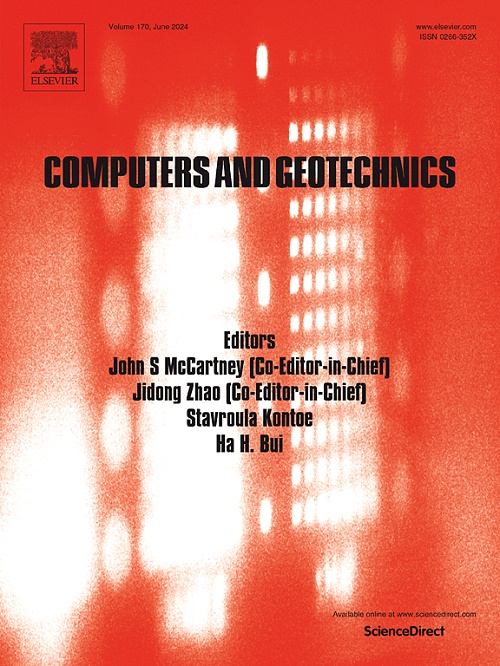A meta-damping model for soil-pile interaction in large-diameter pipe piles under horizontal dynamic loading
IF 5.3
1区 工程技术
Q1 COMPUTER SCIENCE, INTERDISCIPLINARY APPLICATIONS
引用次数: 0
Abstract
A comprehensive understanding of soil-pile interaction (SPI) is crucial for applications in earthquake engineering and offshore structures subjected to dynamic loads. The soil plug within large diameter pipe piles plays a significant role in dynamic horizontal loading. Previous models primarily focus on the soil plug’s resistance, neglecting its inertial effects, which leads to discrepancies in predicted natural frequencies and stiffness. This study introduces a meta-damping model to simultaneously account for both the resistance and inertial effects of the soil plug. A theoretical model for pipe piles embedded in saturated soil under horizontal dynamic loading is developed using this model. The model’s validity and accuracy are verified through comparisons with experimental data and existing theoretical models. The impact of the soil plug on the dynamic characteristics of the pile is explored, revealing that traditional plane strain models, which neglect the inertial effects, tend to overestimate the natural frequency and underestimate dynamic damping. The discrepancies are more pronounced for piles with larger diameters and poorer soil properties. This highlights the importance of considering the soil plug’s inertial effects for more accurate dynamic analysis.
求助全文
约1分钟内获得全文
求助全文
来源期刊

Computers and Geotechnics
地学-地球科学综合
CiteScore
9.10
自引率
15.10%
发文量
438
审稿时长
45 days
期刊介绍:
The use of computers is firmly established in geotechnical engineering and continues to grow rapidly in both engineering practice and academe. The development of advanced numerical techniques and constitutive modeling, in conjunction with rapid developments in computer hardware, enables problems to be tackled that were unthinkable even a few years ago. Computers and Geotechnics provides an up-to-date reference for engineers and researchers engaged in computer aided analysis and research in geotechnical engineering. The journal is intended for an expeditious dissemination of advanced computer applications across a broad range of geotechnical topics. Contributions on advances in numerical algorithms, computer implementation of new constitutive models and probabilistic methods are especially encouraged.
 求助内容:
求助内容: 应助结果提醒方式:
应助结果提醒方式:


